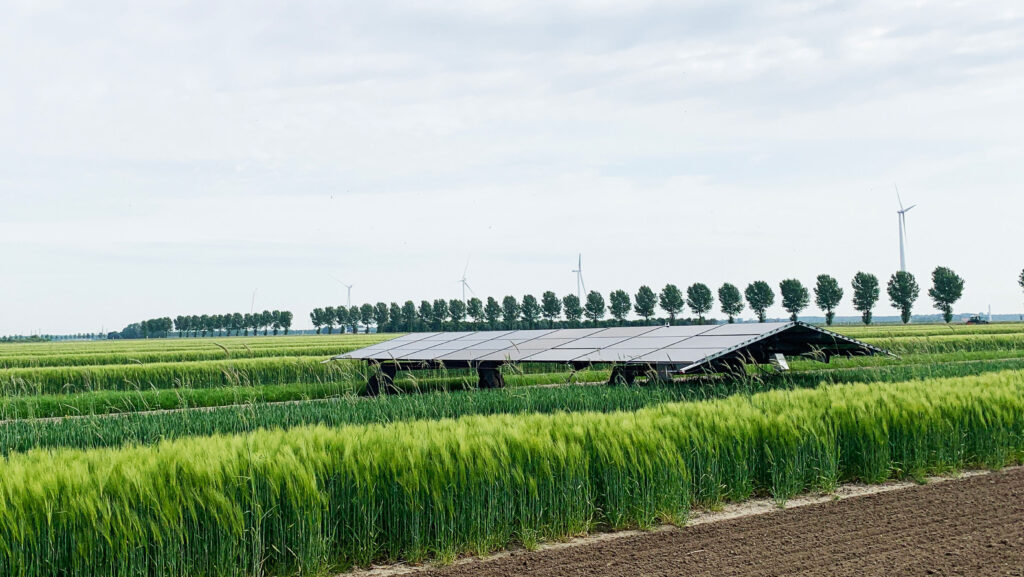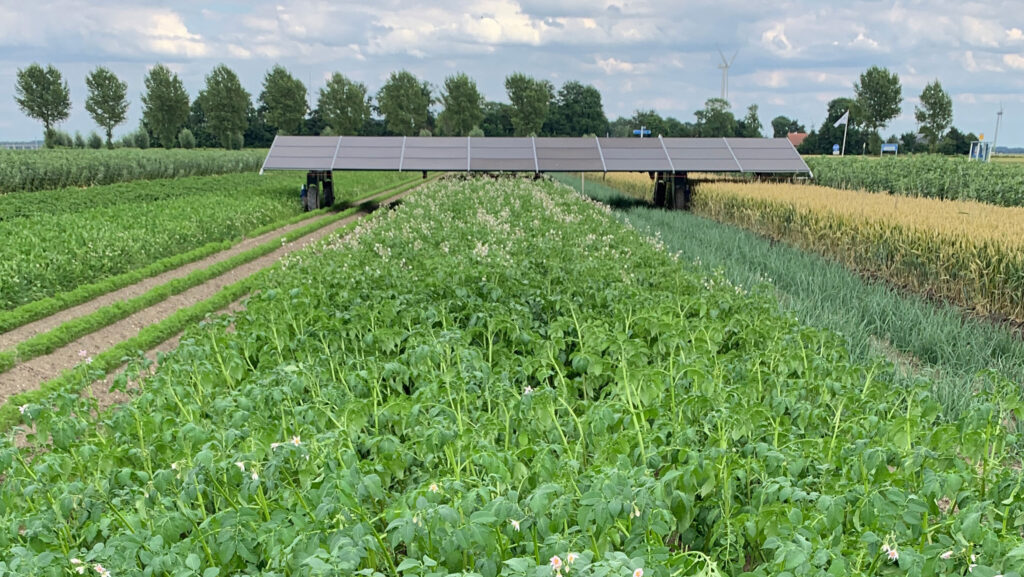Moving solar panels capture energy over growing crops
 The 12m machine moves at a snail’s pace across fields © H2arvester Systems BV
The 12m machine moves at a snail’s pace across fields © H2arvester Systems BV A novel approach to capturing solar power saves farmers having to choose between dedicating a field to energy or crop production.
Developed in the Netherlands by industrial designer Marcel Vroom and partners, the concept involves a large mobile solar harvester – an array of panels mounted on a gantry-type vehicle – connected by cable to the electricity grid or an on-farm storage system.
See also: Solar helps future-proof broiler business for young farmer
“With the H2arvester, you can grow crops and capture energy in the same field at the same time, so it’s a new way of double cropping,” he says.
“It could also be used as part of a system for making ‘green’ hydrogen to power the farm of the future.”
The photovoltaic panels are mounted at opposing angles on a 12m-wide frame, with four electrically driven wheels enabling it to trundle at a snail’s pace up and down a field.
It can be parked at the end of its 50m or so operating run while field work takes place and then set in motion again to avoid shading crops.
To mitigate the cost of a power transfer installation, Marcel suggests operating the machines in a connected fleet, and to that end the minimum order accepted is four H2arvesters.
The machines come with a reel carrying 50m of AC connection cable and a junction box/power plug to make a further connection to a ground cable leading to a mains input and/or battery storage system.
The initial junction box needs to be placed within a 5m radius of one end of the harvester’s path.
Any cropping situation would be suitable, Marcel suggests, including dairy farms with a large area of flat, level grassland, and farms growing arable or horticultural crops.

The solar energy-gathering H2arvester in action during trials © H2arvester Systems BV
Mobile solution
The company, H2arvester Systems BV, is described as a start-up “dedicated to research, development and implementation of mobile and autonomous agrivoltaic systems and agrirobotics” and is offering the machine for sale in Europe.
A fleet of four is priced at €200,000 (£171,000). Alternatively, the solar harvesters can be leased for €100 (£86) a week, including delivery and installation, but not cabling and other equipment required.
“A fleet of eight such machines operating across 1ha of productive land could generate 200,000kWh of electricity, or at least 2MWh on 10ha,” says Marcel.
Co-inventor Rob Jacobs accepts that setting up an H2arvester fleet is more expensive than an equivalent fixed-panel solar farm.
“But normally, if you put fixed panels on a field you can no longer grow crops; with a mobile solution you can generate electricity and grow crops in the same place.”
Tool carrier
The team behind the H2arvester development has designed the gantry vehicle to also operate as a large-scale autonomous tool carrier – without the solar panels, of course.
At 12m wide, it would have significantly greater capacity than current robot field machines while being used for weeding, scanning, and crop and soil monitoring.
Operating as a mobile drip irrigator is another application suggested.
The tool carrier would be particularly relevant for crops grown in rows, such as salads, vegetables, maize and sugar beet.

